#hreflang tag generator
Explore tagged Tumblr posts
Text

1 note
·
View note
Text
How Natalio Amado Fakhre Helps Brands Dominate Google Rankings Across Europe
An organization's visibility on Google can make or break its success in the crowded digital marketplace. Across Europe, one digital strategist is helping companies rise to the top of search results—Natalio Amado Fakhre. Based in Madrid, Spain, Natalio is known for his sharp SEO strategies, social media expertise, and brand-building capabilities that consistently deliver results.
Let’s examine how Natalio helps brands claim top positions on Google and build sustainable search engine dominance.
Who Is Natalio Amado Fakhre?
Natalio Amado Fakhre is a Madrid-based digital marketing expert focused on SEO, social media marketing, and branding. Over the years, he has worked with businesses across multiple European markets—developing and executing data-driven campaigns that directly increase visibility, traffic, and conversions.
His approach is technical, creative, and laser-focused on what Google values most: quality content, authority, and user experience.
Foundations of His SEO Success
1. Fixing What Holds Brands Back
Natalio starts with deep technical SEO audits, identifying and resolving issues that hinder performance:
Page speed and core web vitals
Broken links and crawl errors
Mobile responsiveness
Duplicate content and indexing gaps
These elements lay the groundwork for everything else—because even the best content can’t rank if a site’s foundation is flawed.
2. Keyword Targeting That Matches User Intent
Ranking is only valuable if it matches what users are actually searching for. Natalio conducts intent-focused keyword research, building strategies that cover:
Informational queries (e.g., guides, tips)
Transactional searches (e.g., buy, hire, services)
Regional keywords tailored for each European market
This precision helps generate not just traffic—but qualified, conversion-ready visitors.
3. Strategic On-Page Optimization
Every page is optimized with:
Clear heading structures (H1-H3)
Internal linking to boost topical relevance
Optimized images with alt tags
Schema markup to improve search visibility
His focus on semantic SEO ensures that content communicates value to both users and Google’s crawlers.
Localizing SEO for European Markets
Natalio understands that SEO in Europe isn't one-size-fits-all. Search behaviors, languages, and competitors vary across countries. He tailors strategies with:
Local keyword research (Spanish, French, German, etc.)
Region-specific backlink outreach
Hreflang implementation for multilingual targeting
This attention to regional detail gives his clients an edge in markets like France, Germany, Italy, the Netherlands, and beyond.
Creating Content That Drives Rankings
Tone and Voice
Natalio builds a consistent brand voice that aligns with each client’s identity. Whether it's professional, approachable, or bold, the tone remains uniform across:
Blog posts
Service pages
Landing pages
Social content
Content Formats That Work
He favors high-performing formats such as:
1000–2000 word blog posts
How-to guides
Comparison articles
Case studies
Listicles and resource hubs
These formats naturally earn backlinks, increase time on page, and support Google’s E-E-A-T principles (Experience, Expertise, Authoritativeness, Trust).
Visual & Interactive Elements for Better UX
User experience is now a direct ranking factor. Natalio boosts engagement by incorporating:
Optimized Images: Branded graphics with alt text and compression
Infographics: Great for link-building and quick summaries
Embedded Videos: Increases time-on-site and builds trust
Interactive FAQs and Sliders: Enhances UX and improves mobile engagement
This reduces bounce rates and encourages deeper content exploration.
Safe, Scalable Link-Building
Natalio doesn’t chase shortcuts. His white-hat link-building tactics include:
Guest posting on relevant, high-authority blogs
Securing digital PR coverage in European outlets
Collaborating with influencers for natural link placements
Building citation links for local SEO strength
These efforts improve domain authority and create ranking durability—especially useful in algorithmic volatility.
Performance Tracking That Matters
Every strategy is backed by clear reporting. Natalio tracks and shares progress through:
Google Analytics 4
Google Search Console
SEO tools like Semrush or Ahrefs
Custom dashboards tracking key KPIs
From organic traffic to keyword rankings and goal completions, clients see exactly where their growth comes from—and what to optimize next.
Notable Results Across Europe
Clients across industries and regions have experienced:
+200% organic traffic growth in 6–9 months
Page one rankings for competitive keywords
Reduced paid ad spend due to organic lead generation
Improved domain authority across multilingual sites
Whether it’s a Spanish B2B SaaS, a French luxury e-commerce brand, or a German real estate agency, Natalio’s SEO blueprint adapts to deliver.
Final Words
Natalio Amado Fakhre isn’t just helping brands appear on Google—he’s helping them stay at the top. His strategies are rooted in data, refined through experience, and shaped for performance in diverse European markets.
For businesses aiming to lead their niche online, partnering with a digital strategist like Natalio can be the difference between showing up—and dominating.
2 notes
·
View notes
Text
Unlock Growth with SEO Services in Bangalore: Why Hello Errors is Your Strategic Partner

In the tech-savvy ecosystem of Bangalore, competition among digital businesses is fiercer than ever. To rise above the noise, search visibility is not optional—it’s essential. That’s where SEO Services in Bangalore become a growth enabler. Whether you're a local store or a thriving SaaS product, your ability to rank on search engines determines how well your audience can find and trust you.
At the forefront of this transformation is Hello Errors, a Bangalore-based digital powerhouse offering performance-driven SEO services tailored to modern business needs. More than just a service provider, Hello Errors is a strategic partner helping businesses unlock long-term visibility and sustainable growth.
What Makes SEO Essential for Bangalore Businesses?
Before diving into solutions, let’s understand why SEO matters—especially in a city like Bangalore:
Bangalore has over 10 million internet users. If your business isn’t showing up when they search, you're losing leads to competitors.
Google processes over 8.5 billion searches per day. Local SEO helps your business surface in nearby, intent-driven queries.
Users trust organic results more than paid ads. Higher ranking equals higher credibility.
By investing in the right SEO Services in Bangalore, businesses can tap into high-conversion traffic, build lasting trust, and create a digital presence that outlives ad budgets.
Hello Errors: Blending Creativity and Strategy in SEO
Hello Errors isn’t just another SEO agency—it’s a full-stack digital solutions provider with deep roots in Bangalore. Our mission is to elevate brands by offering design-first, user-centric, and performance-focused digital experiences.
While we offer a range of services like web development, app development, AI/ML, and UI/UX design, our SEO Services in Bangalore are built on creativity, research, and measurable impact.
Here’s how we do things differently.
1. Industry-Focused SEO Strategy
Rather than applying generic tactics, we tailor SEO campaigns to the nuances of your industry. We understand that a B2B SaaS company has a different sales cycle and search intent than a local bakery or law firm.
For example:
For startups, we build awareness through content funnels and long-tail keywords.
For healthcare, we focus on medical keyword accuracy and reputation building.
For education, we optimize for admissions-related search phrases like “best coding bootcamp in Bangalore.”
Each strategy includes custom KPIs, competitor benchmarking, and audience segmentation.
2. Voice Search & Mobile SEO Optimization
Did you know that over 58% of all searches in India happen on mobile, and a growing percentage are voice-based? Hello Errors optimizes your site for both.
We use conversational keywords that match voice queries like “best digital marketing company near me.”
We ensure your mobile site is lightning-fast, interactive, and fully responsive.
We implement structured data so Google understands and promotes your content in voice results.
These strategies keep you ahead in today’s voice-activated search environment.
3. Smart Link Building and Digital PR
Backlinks are still a huge ranking factor—but not all links are created equal.
At Hello Errors, we focus on high-quality, relevant backlinks through:
Guest posts on authoritative blogs
Mentions in Bangalore-focused business directories
Digital PR campaigns that gain coverage in media and blogs
We also track toxic backlinks and disavow them to maintain your domain health—essential for any effective SEO Services in Bangalore campaign.
4. Multilingual SEO for Diverse Audiences
Bangalore is a melting pot of cultures and languages. If your business targets a multilingual audience, Hello Errors has you covered.
We implement hreflang tags for accurate regional targeting
We optimize content for keywords in Kannada, Hindi, and English
We create culturally relevant content that improves local engagement
This is especially useful for e-commerce, education, and service-based platforms aiming to reach different linguistic groups.
5. Conversion-Centric SEO, Not Just Traffic
Unlike agencies that chase only page views, Hello Errors focuses on what really matters: conversions.
We analyze visitor behavior through heatmaps and session recordings
We improve your page UX to reduce bounce rate
We optimize CTA buttons, forms, and layout to guide users toward action
This fusion of SEO with UX principles helps turn your organic traffic into loyal customers.
6. Data-Driven SEO Dashboards & Reports
Transparency and analytics are key to our approach. When you partner with Hello Errors, you get access to a personalized SEO dashboard where you can:
Monitor real-time keyword rankings
Track user acquisition, engagement, and retention
Compare month-over-month performance
Get actionable insights and next-step recommendations
You never have to wonder if your SEO Services in Bangalore are working—our data speaks for itself.
7. Algorithm-Resistant Strategies
Google updates its algorithm hundreds of times a year. Instead of chasing trends, Hello Errors builds future-proof SEO strategies:
We prioritize E-E-A-T (Experience, Expertise, Authoritativeness, Trustworthiness)
We implement content clustering for semantic relevance
We stay compliant with the latest Core Web Vitals metrics
Our proactive approach ensures your rankings are not only achieved but sustained.
Success Story Snapshot
Client: Local Retail Brand in Jayanagar Challenge: Low website visibility, high bounce rate Solution: Technical SEO + Mobile Optimization + Local SEO Result: 230% increase in organic traffic within 4 months and Page 1 ranking for 12 high-intent local keywords
That’s the Hello Errors difference—measurable SEO success that drives business outcomes.
How to Get Started with Hello Errors
Whether you’re launching a new website, rebranding an old one, or simply not seeing results from your current SEO efforts, Hello Errors is ready to help.
We start with a free SEO consultation, followed by a technical audit and goal alignment. From there, we customize a strategy that fits your business stage, niche, and budget.
Final Thoughts
In the bustling digital economy of India’s Silicon Valley, your online presence is your first impression. With Hello Errors’ tailored SEO Services in Bangalore, you’re not just climbing rankings—you’re building a resilient, visible, and trusted brand.
Let’s grow your business together—smarter, faster, and with impact.
#SEOservicesinBangalore#HelloErrors#SearchEngineOptimization#BangaloreStartups#LocalSEOBangalore#UXSEO#DigitalMarketingIndia#RankHigher#ContentStrategy#SEOGrowth
0 notes
Text
SEO for Manufacturing Industry: How to Achieve Top Search Rankings

In 2025, the manufacturing industry isn’t just about machines and manpower—it’s also about digital visibility. Buyers today aren’t flipping through directories or attending every trade show. Instead, they’re searching Google for components, services, and trusted manufacturers. That means if your business isn’t ranking on search engines, you’re invisible.
SEO—or Search Engine Optimization—is no longer optional for manufacturers. It’s a core business tool. And if you’re serious about growth, partnering with the best SEO company in Ahmedabad could be the game-changing move your brand needs.
Why Manufacturing Needs SEO More Than Ever
The digital transformation of B2B is well underway. Procurement officers, sourcing heads, and international buyers all begin their journey online. From searching for “SS ball bearings manufacturers” to comparing CNC machining services, search engines are the new business gateways.
Here’s why SEO is critical for manufacturers:
90% of B2B buyers research online before contacting a supplier
Organic search drives more qualified leads than paid ads in the long run
A top ranking builds authority and trust instantly
SEO boosts both domestic and global visibility without inflating marketing budgets
In short, SEO gives you the long-term advantage that traditional ads or cold outreach can’t.
Strategy 1: Keyword Research Tailored to Industrial Search Intent
Generic SEO won’t cut it for manufacturing. You need to know how decision-makers search, which means digging into industrial search patterns.
At digi360, the best digital marketing company in Ahmedabad, we specialize in identifying:
High-value long-tail keywords (e.g., “custom stainless steel fabrication India”)
Buyer-intent phrases like “bulk supplier,” “OEM manufacturing,” or “ISO certified”
Location-driven terms for regional targeting (e.g., “bearing manufacturers in Gujarat”)
Targeting these specific terms helps attract prospects that are already halfway through their buying journey.
Strategy 2: Technical SEO Built for Complex Websites
Manufacturing websites often have:
Dozens of product pages
PDFs, datasheets, and catalogs
Multi-lingual or international sections
Complex navigation structures
All these make technical SEO absolutely essential.
We focus on:
Optimizing crawlability and indexation
Fixing broken links, redirects, and speed issues
Structuring schema markup for products and services
Mobile-friendliness (yes, even engineers use their phones now!)
With support from the best SEO company in Ahmedabad, your site can go from bulky and slow to sleek and search-friendly.
Strategy 3: On-Page Content That Converts
Industrial buyers want clarity. They’re not looking for fluff or flashy language—they want exact specs, capabilities, and lead times.
Effective on-page SEO involves:
Optimizing meta titles, descriptions, and H1 tags for every service/product
Writing keyword-rich but natural content for each page
Incorporating FAQs that solve actual buyer questions
Using visuals like diagrams, process videos, and certifications to enhance credibility
Our content strategy ensures your site doesn’t just rank—it converts.
Strategy 4: Local & Global SEO Working in Tandem
If your business serves both local and international markets, your SEO strategy should reflect that.
Here’s how we approach it:
Local SEO: Google Business Profile optimization, local keywords, regional landing pages
Global SEO: International targeting with hreflang tags, multi-country keyword strategies, export-focused content
This layered approach is exactly what manufacturers need in 2025 to stay competitive. Whether you want leads from Rajkot or Riyadh, digi360, the best digital marketing company in Ahmedabad, can make it happen.
Strategy 5: Link Building with Industrial Authority
Backlinks from relevant, trusted sources tell Google that your site is reliable.
Manufacturing brands often overlook this, but it’s a critical ranking factor. We build links from:
Industry directories
Trade magazines and niche blogs
Partner websites
Supplier associations or event listings
These links not only improve rankings but can drive referral traffic and genuine inquiries.
Bonus Strategy: Performance Tracking & ROI Analytics
SEO without measurement is just guesswork.
We provide:
Keyword tracking dashboards
Monthly SEO performance reports
Heatmaps and visitor flow data
Conversion tracking for quote requests, downloads, and inquiries
When you work with the best SEO company in Ahmedabad, transparency and performance come standard.
Final Word: Build a Stronger Digital Foundation with SEO
The future of manufacturing & equipment isn’t just about better machines—it’s about smarter marketing. SEO offers long-term growth, authority, and a steady stream of qualified leads. But you need a strategy built around your industry, your audience, and your goals.
At digi360, the best digital marketing company in Ahmedabad, we help manufacturers like you own Page 1 of Google with customized, data-backed SEO solutions. If you’re ready to stop being invisible and start being the go-to name in your industry, we’re here to help.
#ManufacturingSEO#IndustrialMarketing#B2BSEO#DigitalMarketingForManufacturers#SEOForIndustry#AhmedabadSEO#SmartManufacturing#LeadGenerationSEO#TechnicalSEO#digi360Marketing
0 notes
Text
From local to global, digital marketing services can assist you in reaching more people.
Introduction:

The Significance of Digital Reach Now More Than Ever Geographical boundaries have vanished in today's interconnected world when it comes to business. With the correct tools, a small-town startup can compete on a global scale, and digital marketing is the ultimate equaliser. Digital marketing services can propel your business from local visibility to worldwide recognition, regardless of whether you're a tech startup or a neighbourhood café.
At Eloiacs, we specialise in using tailored digital strategies to help businesses reach a wider audience and realise their full potential. We'll look at how digital marketing connects local presence and global impact in this blog.
The Strength of Moving Forward Electronic
Running advertisements is only one aspect of digital marketing. No matter where they are in the world, brands can use this all-encompassing approach that blends SEO, social media, content production, and analytics to draw in, interact with, and convert their ideal customers.
✅ Global offices are not necessary for global expansion.
From Ahmedabad, you can operate a business selling goods to clients in the United States, the United Kingdom, or the United Arab Emirates. Your local brand becomes a global enterprise with the help of tools like social media, Google Ads, and multilingual SEO.
✅ Connect with the appropriate audience at the appropriate moment
Laser-targeted marketing by geography, language, interests, and behaviour is made possible by digital platforms. Your message will always reach the right audience when you use Eloiacs's professional services.
1. Search Engine Optimisation (SEO): Show Up Where People Are Looking
With the right SEO, your company can show up in local and international Google search results.
Eloiacs offers the following services: Local SEO: Increase visibility in your area using Google Business Profile, map listings, and hyperlocal keywords.
Global SEO: Use hreflang tags and region-specific keyword research to optimise for multiple languages and countries.
🔑 Outcome: Your company appears in both local and foreign search results, drawing in a wider range of clients.
2. Content Marketing: Tell Global Stories
Content serves as a conduit between you and your audience around the world. Social media posts, case studies, videos, and blogs all assist in articulating your worth in ways that are relatable to people from different cultural backgrounds.
Our content marketing services at https://eloiacs.com consist of:
Multilingual content and blogs that are pertinent to the industry
YouTube, Instagram, and Reels video marketing
Whitepapers and eBooks are examples of educational lead magnets.
🔑 Outcome: You establish connections, authority, and trust on a global scale.
3. PPC & Online Advertising: Immediate Worldwide Exposure
Pay-per-click (PPC) advertising generates traffic and conversions instantly, but SEO takes time.
Eloiacs provides:
Google Ads to reach a global audience
Facebook and Instagram advertisements in various currencies and geographical areas
LinkedIn campaigns to generate business-to-business leads worldwide
🔑 Outcome: Enter new nations by simply selecting "Launch Campaign" without having to establish a physical presence.
4. Social Media Marketing: Build a Global Brand Community
Today’s audience is scrolling on Instagram, LinkedIn, Facebook, and TikTok—and they’re doing it from all over the world.
We help you:
Create globally appealing visual content
Schedule posts in different time zones
Manage multilingual community engagement
🔑 Result: Your brand becomes visible, likable, and shareable in multiple markets.
5. Localising Websites: Use Their Language
Going global entails modifying the message, design, and content of your website for use in other countries.
Among our offerings are:
Integration of multilingual content
UX/UI modifications for global appeal
Mobile-first designs for audiences around the world
🔑 As a result, customers worldwide believe that your company was created specifically for them.

Case Study: The Local Brand Takeover by Eloiacs Global
Client: The skincare company NatureGlow Organics, situated in Gujarat
Problem: They had no internet presence outside of India, despite their desire to sell globally.
Answer:
Made a Shopify store that is accessible worldwide.
Create Google Shopping and Meta Ads with the US and UAE in mind.
Started collaborating with Instagram influencers
Outcomes in 4 Months:
✅ Over 1200 Foreign Orders
✅ Three Times Revenue Growth
✅ Featured in UK-based niche beauty blogs
➡ All powered by digital marketing services from Eloiacs.
The Best Arguments for Using Eloiacs to Access International Markets
✔ Tailored Approach for Each Phase
Our team creates strategies that fit your business model, objectives, and target market, whether you're just getting started or expanding into new nations.
✔ Complete Digital Services
We provide everything you require in one location, including SEO, PPC, design, and content.
✔ Results Driven bBuoyData
We don't speculate. We use tools like Google Analytics, Meta Insights, and SEMrush to test, analyse, and optimise campaigns based on actual performance metrics
✔ Reasonably priced
Global ambition doesn't have to be costly. Because our plans are scalable, SMEs and startups can expand in a sustainable manner.
Eloiacs-Powered Global Expansion Checklist
Here are the requirements for going global, along with how EloiACS helps with each step:
A prerequisiteThe Eloiacs Solution
Development of multilingual websites and language-specific SEO
Global Advertising PlanGeotargeted PPC campaigns
Localised Content: Content produced in a particular region
Worldwide SEOResearching keywords for target areas
Cross-Border Brand AwarenessInfluencer marketing and social media storytelling
Tracking and Analytics Reports on the performance of global campaigns
We Use Digital Marketing Tools to Reach a Worldwide Audience
Track traffic and conversions worldwide with Google Ads & GA4
Ahrefs and SEMrush: Global SEO evaluations
Cross-platform social media advertisements in Meta Business Suite
Brevo and Mailchimp: Worldwide email automation
Adobe Express and Canva Pro: Multilingual designers
HubSpot CRM: Monitoring leads from worldwide sources
🔧 Eloiacs integrated them all for the best return on investment.
FAQs Regarding Using Digital Marketing to Expand Worldwide
❓ Should I alter my branding in order to expand internationally?
Not all the time. EloiACS can preserve your identity while modifying your current branding to fit new markets.
❓ How quickly can I begin selling abroad?
You can reach global audiences in as little as one to two weeks if you have a ready product and PPC.
❓ Will expanding internationally is costly?
Starting with startup-friendly pricing, EloiACS provides affordable global expansion strategies.
Conclusion: Use Eloiacs to Expand Your Horizons
Digital marketing opens the door to new markets, new clients, and new success stories, whether they are local foot traffic or worldwide clicks. You don't require large budgets, numerous offices, or constant travel. You just need the right partner and a clever digital strategy.
Eloiacs can help with that. We are your global growth partner in addition to being your digital marketing agency. We assist your company in scaling strategically, economically, and successfully, whether you're moving to a new city or continent.
0 notes
Text
How an E-commerce SEO Agency and a Website Development Agency in India Drive End-to-End Growth
Traffic without uptime is pointless; speed without keyword alignment wastes potential. Blending technical builds with search strategy ensures every page not only looks sharp but ranks and sells. That’s why partnering with a specialist ecommerce SEO agency alongside a reliable website development agency in India delivers lasting gains.
1. SEO Begins at the Code Level
Clean HTML, structured headings, and schema lay the groundwork for crawler comprehension. Page-speed optimisation through lazy loading and asset compression supports user satisfaction and ranking signals. ecommerce SEO agency
2. Keyword Mapping to Information Architecture
Category pages target transactional phrases, while blogs capture informational intent. A sitemap that mirrors this journey helps visitors move from curiosity to checkout with minimal friction.
3. Technical Checkpoints
Canonical tags to prevent duplicate URL dilution.
XML sitemaps submitted through Search Console.
Robots.txt tuned to block staging areas, not core pages.
HTTPS everywhere for trust and security.
4. DI Infotech’s Integrated Framework
Developers and SEO analysts sit in the same scrum. A ticket for a new collection page includes design specs, meta tag guidelines, and internal linking paths. Weekly audits catch redirect loops or script bloat before they hurt rank.
5. Content That Converts and Ranks
Buying guides solving common pain points.
Comparison tables aiding decision making.
Video embeds increasing time on page.
Each asset earns backlinks naturally by offering depth rather than fluff.
6. Data-Driven Iteration
Use Search Console, GA 4, and Hotjar insights to refine on-page copy, adjust keyword focus, and test new CTA colours. Track revenue attributed to organic sessions to prove direct website development agency in India impact.
7. Managing International SEO
If your catalogue ships worldwide, handle Hreflang, local currency displays, and warehouse-specific delivery times. Indian agencies familiar with both domestic GST rules and global e-commerce taxation simplify compliance.
8. Budget Benchmarks
Allocate roughly one-third of total site build cost to SEO in the first year, with a maintenance slice covering content refresh, link earning, and tech tune-ups in subsequent years.
9. Red Flags When Choosing Partners
Reliance on outdated link-farm tactics.
Generic templates with no room for brand differentiation.
No clear SLA for uptime or bug fixes.
10. Conclusion Without Saying “Conclusion”
Growth happens when site architecture, content quality, and authority signals reinforce one another. An ecommerce SEO agency paired with a website development agency in India like DI Infotech unites those pillars under one strategy. Visit DI Infotech to start turning clicks into loyal customers.
0 notes
Text
Optimize Your CMS for SEO Success
Optimize your CMS for SEO success with Growzify's CMS SEO Services. We configure your CMS to handle SEO essentials like automated metadata generation, dynamic sitemap updates, and canonical and hreflang tags, ensuring your site is search engine-friendly and increases crawl efficiency.
0 notes
Text
In the competitive world of hospitality, visibility is everything and in 2025, that visibility is being driven by smarter, faster, and more localized SEO strategies.
If you're managing a hotel chain and still relying on outdated optimization tactics, it's time to rethink your digital roadmap.
Here are the key SEO trends hotel brands cannot afford to ignore:
1. Voice Search Optimization With more travelers using voice assistants to find accommodations, your SEO strategy must include natural, conversational keywords and long-tail phrases.
2. Local SEO Dominance Google’s local search algorithm is more refined than ever. Ensure every property in your chain is optimized with localized content, Google Business listings, and consistent NAP data.
3. Core Web Vitals & Page Experience Site speed, mobile usability, and interactivity are no longer just technical issues they’re ranking factors. A slow-loading site can cost you both guests and Google visibility.
4. AI-Powered Content Strategy Dynamic, AI-generated content tailored to user intent is on the rise. Hotel chains need a content plan that adapts to changing search behavior and user preferences.
5. E-A-T Signals (Expertise, Authoritativeness, Trustworthiness) Build SEO authority with high-quality blog content, trustworthy backlinks, and detailed service pages. Google rewards brands that demonstrate real value and expertise.
6. Multilingual SEO for Global Reach If your hotel operates internationally, optimizing for multilingual queries is critical. Regional content, hreflang tags, and cultural nuance all play a role in search performance.
Bottom line: In the hospitality industry, being found online is no longer enough. You must be found first and trusted fast. SEO in 2025 is more strategic, technical, and personalized than ever.
If you're a hotel chain ready to lead the digital conversation, not follow it, SVB Digital Marketing Agency is your partner in growth.
Contact us today! +91-7841996458 | [email protected]
#digital marketing companies pune#social media marketing#digital marketing agency#digital marketing agency in pune#digital marketing company in india#emailmarketing#search engine optimization#digital marketing services#digital marketing#google ads
0 notes
Text
Scaling Borders: How to Craft Shopify Content that Connects Globally in 2025

In 2025, the eCommerce world is more connected than ever. With Shopify powering over a million businesses worldwide, reaching a global audience isn’t just an opportunity, it’s a necessity. But expanding your Shopify store globally isn’t about translating your content word-for-word. It’s about creating experiences that resonate across cultures, languages, and consumer behaviors.
Here's how to craft Shopify content that truly connects with a global audience in 2025:
1. Start with Cultural Intelligence
Understanding the nuances of different regions is crucial.
Research cultural preferences, local traditions, and buying habits.
Avoid assumptions, what works in the U.S. might fall flat in Japan.
Adapt your visuals, tone, and product positioning to suit the cultural context.
Tip: Use region-specific testimonials or local influencer content to boost trust and familiarity.
2. Create Content in Local Languages, But Go Beyond Translation
Machine translation tools have improved, but they still lack the human touch. To truly connect:
Use native-speaking copywriters for translations.
Focus on transcreation, adapting your message to preserve intent and emotional impact.
Consider local slang, idioms, and humor where appropriate.
This level of detail ensures your content feels authentic rather than robotic.
3. Geo-Targeted Content Strategy
Instead of creating one-size-fits-all content, segment your audience by region.
Develop localized landing pages with country-specific offers.
Schedule regionally relevant blog content, product announcements, or campaigns.
Use Shopify’s built-in geo-targeting and third-party tools to serve custom content based on IP location.
4. Visual Storytelling with Global Appeal
Your visuals can bridge cultural divides, or create them.
Use inclusive imagery that reflects diversity.
Avoid symbols, gestures, or color schemes that might carry different meanings globally.
Keep design clean and universally appealing, with intuitive navigation and localized calls to action.
5. Leverage Social Proof with International Flair
Social proof is powerful, but it must reflect the audience it speaks to.
Display reviews from local customers in their native language.
Highlight global reach by showing user-generated content from multiple countries.
Use region-based case studies to build trust across markets.
6. Stay Compliant and Consider Local SEO
Different countries have different legal and SEO requirements.
Ensure your content meets local regulations, especially for privacy (like GDPR).
Optimize for local search terms, use hreflang tags, and submit region-specific sitemaps.
Partner with local SEO experts for better visibility in target markets.
Ready to Connect Globally? If you're serious about expanding your Shopify store to a global audience in 2025, now is the time to audit your content with the professional Shopify services.
Contact us now!
Conclusion
In a digital landscape that’s becoming more inclusive and global, brands that prioritize localized, culturally intelligent content will win. Shopify gives you the tools, how you use them defines your reach. Craft content that speaks to real people, in real markets, with real impact. Because in 2025, global success isn’t just about scaling. it’s about connecting.
0 notes
Text
Top SEO Agencies in UAE Share Common Mistakes to Avoid in 2025
As we approach 2025, the top SEO agencies in UAE are identifying critical mistakes that could derail search visibility. Based on emerging trends and algorithm shifts, here are the key missteps to avoid for maintaining competitive rankings in the Middle Eastern digital landscape.
1. Neglecting AI-Generated Content Quality
Google's 2024 updates now heavily penalize low-value AI content. Top agencies warn against publishing unedited AI drafts without human refinement, failing to add unique insights or expert perspectives, and over-optimizing AI content that triggers spam filters.
The smart alternative is to use AI for research and drafts, but have subject matter experts enhance with UAE-specific case studies, local market nuances, and original data analysis.
2. Overlooking Arabic SEO Opportunities
Many businesses focus solely on English while 60% of UAE searches occur in Arabic, Arabic voice search is growing 25% year-over-year, and local competitors are dominating Arabic search engine results pages.
The professional solution involves implementing proper hreflang tags for Arabic/English versions, conducting Arabic keyword research (not direct translations), and adding Arabic schema markup for rich snippets.
3. Technical SEO Complacency
Top agencies report clients losing rankings due to not optimizing for Core Web Vitals v2 updates, ignoring mobile-first indexing enhancements, and poor structured data implementation.
A must-do checklist includes monthly technical audits, continuous mobile UX improvements, and implementing advanced schema markup (FAQ, HowTo, Event).
4. Backlink Quality Blind Spots
Dangerous trends include over-reliance on directory links, purchasing cheap GCC-region links, and neglecting link diversity.
What works in 2025 includes digital PR earning UAE media coverage, expert roundups with regional influencers, and broken link building on .ae domains.
5. Local SEO Neglect
UAE-specific pitfalls include incomplete Google Business Profile optimizations, inconsistent name-address-phone information across Arabic/English listings, and not leveraging local Q&A platforms like Bayut.
Winning moves involve regular GBP posts with localized offers, Arabic/English review management, and hyper-local content for each emirate.
6. Ignoring Visual Search Optimization
With Pinterest and Google Lens growth, 40% of UAE shoppers use visual search, making image/video SEO crucial while most businesses aren't optimizing visual assets.
The action plan includes optimizing image alt texts with local keywords, implementing Product schema for e-commerce, and creating visual content for "search by image" queries.
7. Conversion Experience Oversights
Google now considers page engagement metrics, mobile conversion rates, and UAE-specific UX preferences as ranking factors.
Critical fixes include addressing slow-loading payment gateways, simplifying complicated Arabic form fields, and localizing call-to-action elements.
Why These Mistakes Hurt More in 2025
The top SEO agencies in UAE emphasize these errors are particularly damaging because Google's Experience-Expertise-Authority-Trustworthiness requirements are stricter than ever, UAE's digital sophistication raises user expectations, regional competition punishes any visibility gaps, and algorithm updates now detect spam faster.
Proactive Protection Plan
To avoid these pitfalls, conduct quarterly SEO health audits, balance AI efficiency with human expertise, allocate budget for Arabic SEO, monitor Core Web Vitals weekly, and build genuine UAE backlinks.
The top SEO agencies in UAE consistently find that businesses avoiding these mistakes achieve 30-50% better organic visibility, higher quality lead generation, and more sustainable ranking performance.
For maximum impact in 2025, consider partnering with experienced top SEO agencies in UAE who can navigate these challenges while capitalizing on emerging opportunities in the Middle Eastern market.
0 notes
Text
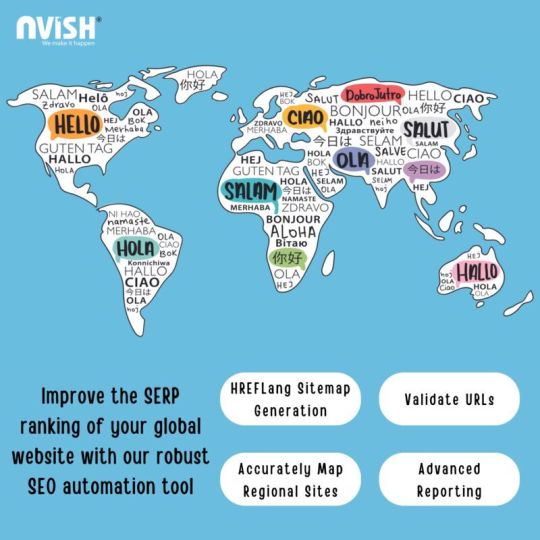
The ideal framework for an SEO-friendly #website is established by proper HREFLang and Sitemap implementation. The HREFLang tag can be used to inform #searchengines like Google that there are several translations of the same page available in various languages catering to different #geographical locations. In doing so, search engines can improve user experience by speaking the website's native #language. For #Free Multilingual/HREFLang sitemap generator. contact us:+1(805)7123704
0 notes
Text
Hyperlocal & Multilingual SEO: Expand Your Reach and Drive International Traffic

If you’re running a global business- this is a must read. In an increasingly interconnected world, businesses must optimize their online presence to reach diverse audiences. Hyperlocal SEO and Multilingual SEO are essential strategies for capturing regional markets and driving traffic from international customers. By focusing on location-specific content and adapting your website for different languages, you can maximize visibility and grow your global presence.
What is Hyperlocal SEO?
Hyperlocal SEO targets searches within a specific geographic location, often down to a neighborhood, city, or region. This approach is especially effective for businesses with physical locations or service areas.
Benefits of Hyperlocal SEO:
Increased Local Visibility: Appear in "near me" searches and Google Maps listings.
Higher Conversion Rates: Local users are often more likely to convert.
Stronger Community Engagement: Build trust within your region.
Hyperlocal SEO Best Practices:
Optimize Google Business Profile: Ensure your profile is complete with accurate business information, images, and reviews.
Local Keywords: Use region-specific keywords in meta tags, headers, and content.
Create Location Pages: Develop dedicated landing pages for each service area.
Generate Local Backlinks: Collaborate with local websites, blogs, and directories.
What is Multilingual SEO?
Multilingual SEO involves optimizing your website for multiple languages to attract international audiences. By providing content in users' preferred languages, you enhance user experience and increase your site's relevance in global search engines.
Benefits of Multilingual SEO:
Expanded Market Reach: Connect with customers in non-English-speaking regions.
Enhanced User Experience: Improve engagement by offering localized content.
Competitive Advantage: Outperform competitors who only provide content in one language.
Multilingual SEO Best Practices:
Translate & Localize Content: Use professional translators to adapt content for cultural nuances.
Implement Hreflang Tags: Indicate language and regional targeting to search engines.
Optimize Multilingual URLs: Use language-specific URL structures (e.g., "/fr/" for French content).
Conduct Regional Keyword Research: Identify popular search terms in each market.
Ensure Mobile Friendliness: Adapt content for mobile users in all target regions.
How Katalysts.net Can Help
At Katalysts.net, we specialize in Hyperlocal and Multilingual SEO strategies tailored to your business goals. From optimizing your Google Business Profile to developing culturally resonant content, our expert team ensures you stand out in both local and global search results.
Contact Katalysts.net today to expand your reach, connect with international audiences, and dominate regional search rankings.
0 notes
Text
Mastering Canonical Tags: Your Guide to Solving Duplicate Content Issues and Boosting SEO
Canonical tags play a crucial role in optimizing websites for search engines by addressing duplicate content issues. Duplicate content occurs when similar or identical material appears across multiple URLs, leading to confusion for search engines about which page to prioritize. This can dilute ranking signals, hinder SEO performance, and reduce visibility. Canonical tags offer a simple yet effective solution by specifying the preferred or “canonical” version of a webpage. When search engines encounter a canonical tag, they consolidate ranking signals, such as backlinks and user engagement, to the specified URL, ensuring that the authoritative version of the page receives maximum visibility.
These tags are especially beneficial for managing variations in URLs caused by tracking parameters, session IDs, or dynamic content sorting, which often generate duplicate pages. They can also be used for pages with minor differences, such as products in different colors, by directing all variations to a main product page. Additionally, canonical tags are useful in e-commerce websites, syndicated content, and cross-domain scenarios, where content is republished on partner sites or other domains.
Implementing canonical tags involves identifying duplicate content, determining the primary URL, and adding the canonical tag in the HTML <head> section of the duplicate pages. Best practices include self-referencing canonical tags, consistent URL formatting, and avoiding conflicting signals between canonical tags and redirects. Combined with tools like hreflang for multilingual sites, canonical tags ensure seamless indexing and ranking without duplication penalties.
By guiding search engines to the preferred URL, canonical tags improve website organization, optimize crawling efficiency, and enhance overall SEO performance. Their strategic use is essential for maintaining a competitive edge in search rankings while offering a streamlined and user-friendly web experience. Canonical tags are a foundational aspect of modern SEO strategies, especially for websites with complex structures or large inventories.
0 notes
Text
Sure, here is the article formatted as requested:
```markdown
Global SEO TG@yuantou2048
Global SEO refers to the practice of optimizing a website to rank well in search engine results pages (SERPs) across multiple countries and languages. This strategy involves understanding the nuances of different markets and tailoring content and technical elements to meet the needs of a global audience.
Key Considerations for Global SEO TG@yuantou2048
Global SEO is essential for businesses aiming to expand their reach beyond domestic borders. Here are some key considerations to keep in mind when implementing a global SEO strategy:
1. Language and Localization: Ensure that your content is available in multiple languages and is culturally relevant to each target market. Use native speakers or professional translation services to maintain accuracy and authenticity.
2. Domain Strategy: Decide whether to use ccTLDs (country code top-level domains), SLDs (subdomain level domains), or gTLDs (generic top-level domains). Each has its pros and cons, so choose based on your business goals and budget.
3. Content Adaptation: Tailor your content to meet the needs and preferences of different audiences. This includes not only language but also cultural references, images, and even product offerings.
4. Technical Optimization: Optimize your website’s structure and technical setup for international users. This includes using hreflang tags, setting up proper canonical URLs, and ensuring fast loading times for users in different regions.
5. Local SEO: Focus on local SEO strategies in each country where you operate. This includes creating location-specific landing pages, optimizing for local keywords, and building local backlinks.
6. Mobile Optimization: With mobile usage varying greatly by region, ensure your site is fully responsive and optimized for mobile devices in all target markets.
7. Compliance with Local Regulations: Be aware of and comply with local laws and regulations regarding data privacy, copyright, and other legal requirements.
8. Keyword Research: Conduct thorough keyword research for each market, considering local search trends and preferences. Tools like Google Keyword Planner can help identify high-performing keywords in different languages.
9. User Experience: Provide a seamless user experience by considering factors such as page speed, mobile-friendliness, and accessibility standards that may differ from one country to another.
By addressing these aspects, you can effectively enhance your global visibility and attract more organic traffic from around the world. Implementing a robust global SEO strategy will help you rank higher in search results and improve your overall online presence globally.
Implementing a strong global SEO strategy requires careful planning and execution. By focusing on these key areas, you can significantly boost your website’s visibility and engagement across various regions, leading to increased traffic and conversions from a diverse audience.
For more detailed guidance and personalized advice, feel free to reach out via TG@yuantou2048 for tailored strategies and insights specific to your business needs.
```
加飞机@yuantou2048

EPS Machine
負面刪除
0 notes
Text
How SEO Services and SEO European Services Can Transform Your Brand

Introduction
In today’s fast-paced digital world, having a strong online presence isn’t just an option—it’s a necessity. Businesses that fail to leverage the power of SEO often struggle to compete. That’s where SEO services and SEO European services come into play. Whether you’re a startup or a well-established brand, an effective SEO strategy can completely transform your business. But how does it work, and why is it so crucial? Let’s dive in.
Understanding SEO Services
SEO (Search Engine Optimization) is the process of improving a website’s visibility on search engines like Google. But SEO isn’t just about ranking higher—it’s about delivering value to your audience, building credibility, and driving organic traffic that converts into sales.
On-Page SEO
On-page SEO focuses on optimizing elements within your website to improve rankings. This includes:
Using relevant keywords in strategic places (titles, headings, and content)
Writing compelling meta descriptions that encourage clicks
Structuring content with proper header tags (H1, H2, H3)
Enhancing readability and user experience
Off-Page SEO
Off-page SEO is all about boosting your website’s authority through external factors like:
Building high-quality backlinks from reputable sites
Social media engagement and brand mentions
Guest blogging and influencer outreach
Technical SEO
Technical SEO ensures that your website is optimized for search engines from a technical standpoint. Key factors include:
Improving page speed for better user experience
Ensuring mobile responsiveness
Implementing structured data and schema markup
The Unique Advantages of SEO European Services
SEO strategies can vary depending on the target market, and SEO European services focus on optimizing websites for audiences in Europe. These strategies consider cultural differences, language barriers, and compliance requirements.
Multilingual SEO
Europe is a multilingual market, and businesses must optimize their websites for different languages. This involves:
Translating content accurately for each target audience
Using hreflang tags to direct search engines to the correct language version
Localizing keywords based on region-specific search trends
Understanding GDPR Compliance in SEO
Europe’s strict GDPR regulations affect how businesses collect and process user data. SEO strategies must be compliant by:
Using transparent cookie policies
Ensuring that personal data collection aligns with GDPR rules
Avoiding black-hat SEO tactics that violate privacy laws
How SEO Transforms Your Brand
A well-executed SEO strategy can bring multiple benefits to your brand:
✔ Boosts Online Visibility – Higher rankings mean more exposure and more organic traffic.
✔ Enhances Credibility & Trust – Websites that appear at the top of search results are perceived as more trustworthy.
✔ Improves Conversion Rates – Better SEO means better-targeted traffic, leading to higher sales and lead generation.
The Role of a Full-Service Creative Digital Marketing Agency
SEO is not a one-time task; it requires continuous optimization and strategy. A full-service creative digital marketing agency provides:
A comprehensive SEO approach tailored to your industry
Content marketing strategies that align with SEO goals
Integration of social media marketing to enhance brand awareness
The Future of SEO: Trends to Watch
SEO is constantly evolving, and staying ahead of trends is key. Here are some future SEO trends to keep an eye on:
AI & Machine Learning in SEO – Google’s AI-driven algorithms are changing how search rankings work. Content must be highly relevant and valuable.
Voice Search Optimization – With more people using voice assistants, optimizing for voice search is becoming essential.
Mobile-First Indexing – Google prioritizes mobile-friendly websites, making mobile optimization a must-have for businesses.
Conclusion
SEO is more than just a marketing tactic—it’s a powerful tool that can shape the future of your brand. Whether you’re targeting local or European markets, investing in SEO services and SEO European services ensures your business stays competitive in the ever-evolving digital landscape. If you want your brand to thrive online, it’s time to embrace SEO and unlock its full potential!
0 notes
Text
Top 20 SEO Chrome Extensions: Features & Best Uses

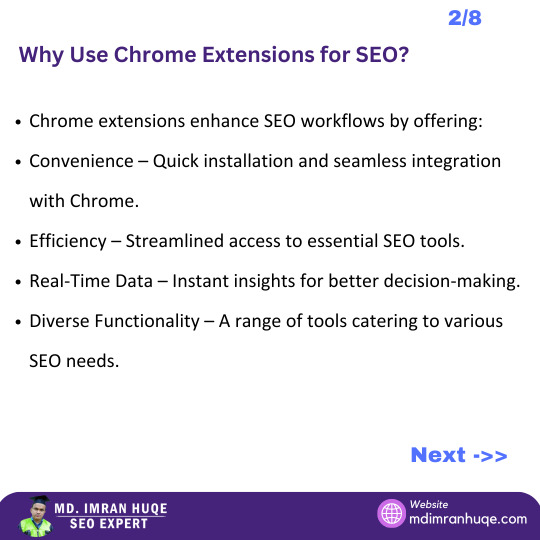
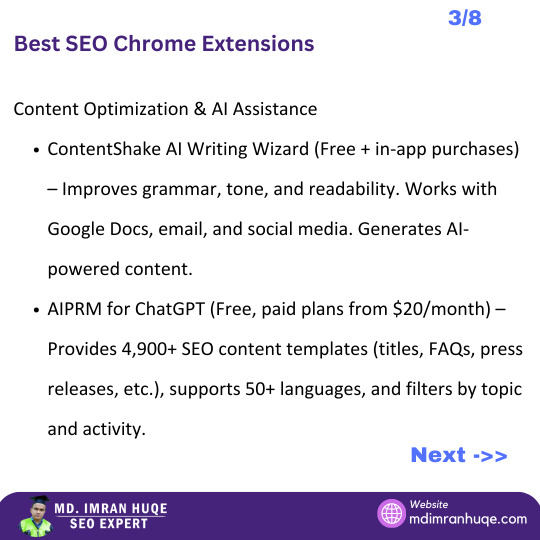
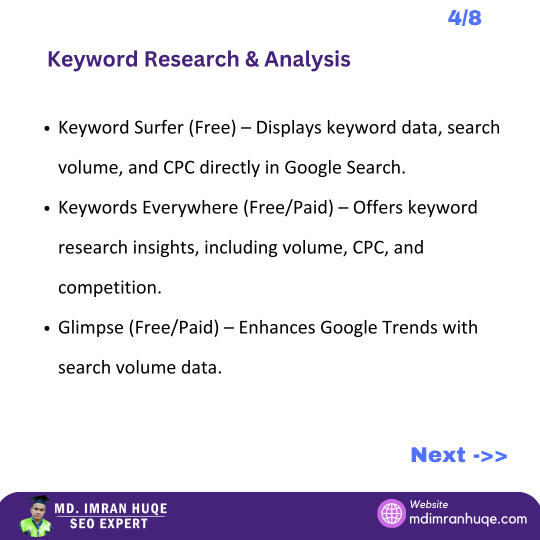
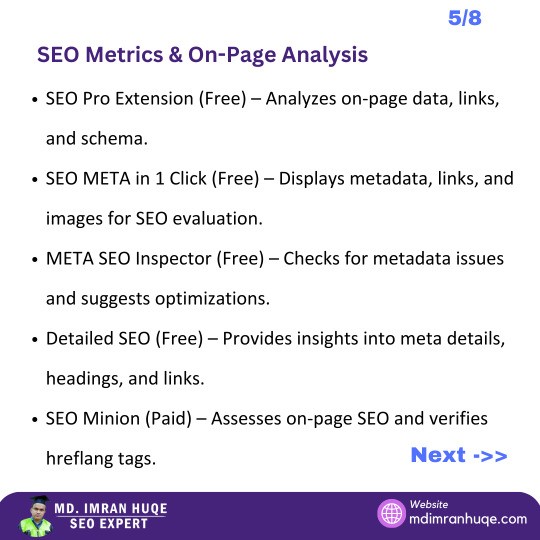
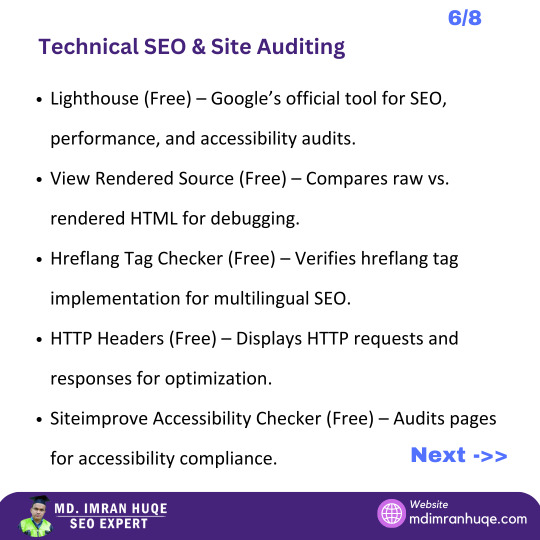
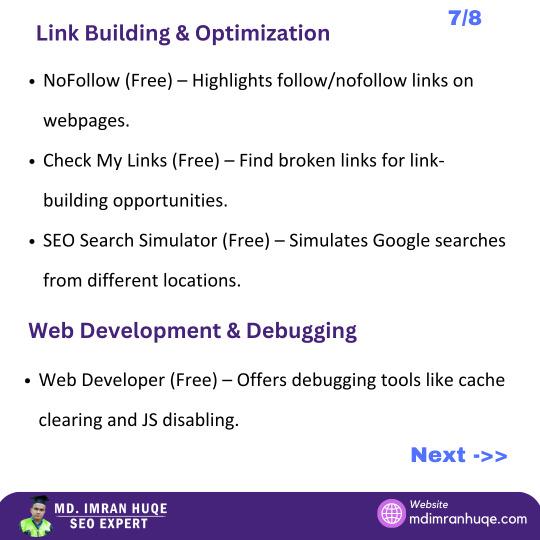
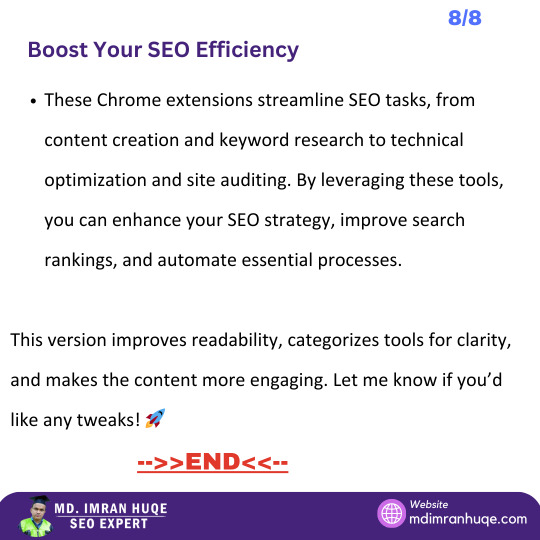
Why Use Chrome Extensions for SEO? Chrome extensions enhance SEO workflows by offering: Convenience – Quick installation and seamless integration with Chrome. Efficiency – Streamlined access to essential SEO tools. Real-Time Data – Instant insights for better decision-making. Diverse Functionality – A range of tools catering to various SEO needs.
Best SEO Chrome Extensions
Content Optimization & AI Assistance ContentShake AI Writing Wizard (Free + in-app purchases) – Improves grammar, tone, and readability. Works with Google Docs, email, and social media. Generates AI-powered content. AIPRM for ChatGPT (Free, paid plans from $20/month) – Provides 4,900+ SEO content templates (titles, FAQs, press releases, etc.), supports 50+ languages, and filters by topic and activity.
Keyword Research & Analysis Keyword Surfer (Free) – Displays keyword data, search volume, and CPC directly in Google Search. Keywords Everywhere (Free/Paid) – Offers keyword research insights, including volume, CPC, and competition. Glimpse (Free/Paid) – Enhances Google Trends with search volume data.
SEO Metrics & On-Page Analysis SEO Pro Extension (Free) – Analyzes on-page data, links, and schema. SEO META in 1 Click (Free) – Displays metadata, links, and images for SEO evaluation. META SEO Inspector (Free) – Checks for metadata issues and suggests optimizations. Detailed SEO (Free) – Provides insights into meta details, headings, and links. SEO Minion (Paid) – Assesses on-page SEO and verifies hreflang tags.
Technical SEO & Site Auditing Lighthouse (Free) – Google’s official tool for SEO, performance, and accessibility audits. View Rendered Source (Free) – Compares raw vs. rendered HTML for debugging. Hreflang Tag Checker (Free) – Verifies hreflang tag implementation for multilingual SEO. HTTP Headers (Free) – Displays HTTP requests and responses for optimization. Siteimprove Accessibility Checker (Free) – Audits pages for accessibility compliance.
Link Building & Optimization NoFollow (Free) – Highlights follow/nofollow links on webpages. Check My Links (Free) – Find broken links for link-building opportunities. SEO Search Simulator (Free) – Simulates Google searches from different locations.
Web Development & Debugging Web Developer (Free) – Offers debugging tools like cache clearing and JS disabling.
Boost Your SEO Efficiency These Chrome extensions streamline SEO tasks, from content creation and keyword research to technical optimization and site auditing. By leveraging these tools, you can enhance your SEO strategy, improve search rankings, and automate essential processes.
This version improves readability, categorizes tools for clarity, and makes the content more engaging. Let me know if you’d like any tweaks! 🚀
To get more information about SEO Chrome Extensions, you can visit now my website:-
jfssoftware.com
0 notes